ShikotanMapAugust 15–22, 2007 The Kuril Islands are now considered a border zone, which means you have to obtain an advance permit to visit this particular corner of the country, even if you’re a Russian citizen. Everything is strict, like in Soviet times. It takes the MS Marina Tsvetaeva over 24 hours to get from the city of Korsakov to Shikotan Island. Passengers pass the time moping about. 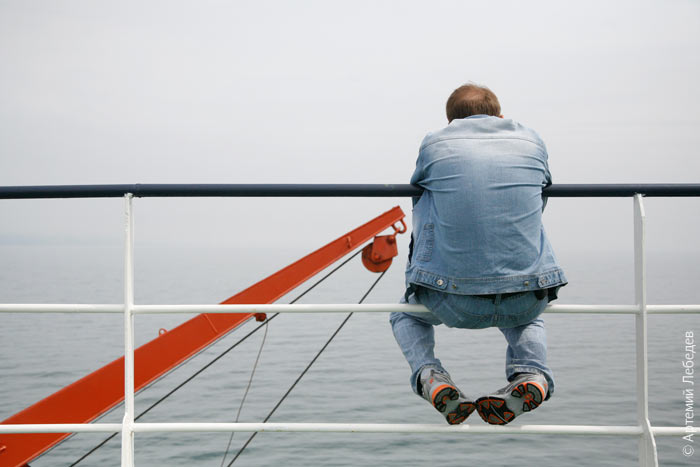 The Soviet approach to service is ineradicable. Tsvetaeva’s bar opens and closes three times a day, and at very inconvenient hours each time. Your first opportunity to get a beer is at 9:00 a.m., which the ship’s PA system informs you of. 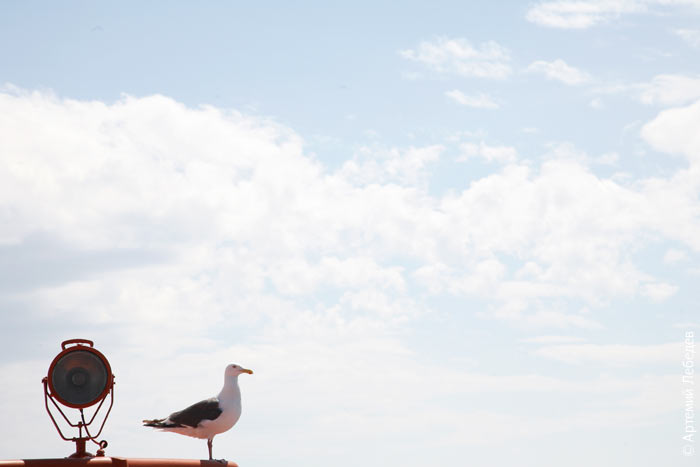 If you want to get a drink after lunch, you have to wait for the bar to open again. Makes you wonder what on earth the barmaid is doing on her breaks that’s so important, when there’s nothing but sea all around and the money that needs to be made is sailing on the same ship. 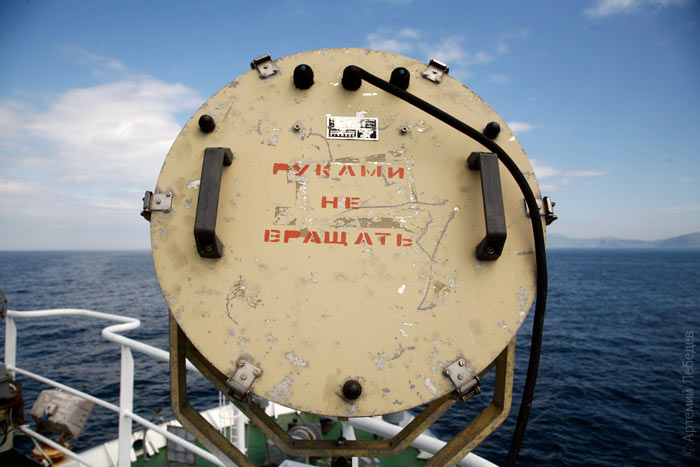 Do not use hands to rotate First, the ship drops anchor in a roadstead just off Kunashir Island. Oh, I should mention that there are dolphins constantly swimming around the ships near the Kurils. 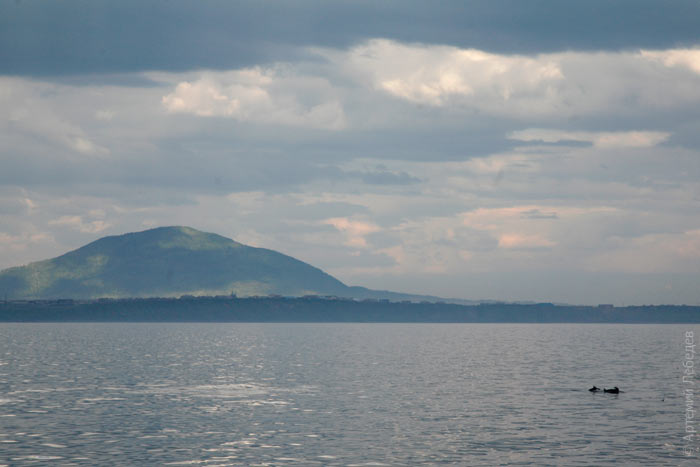 The gift vessel Hope approaches us first to pick up disembarking passengers and take them back to the island. 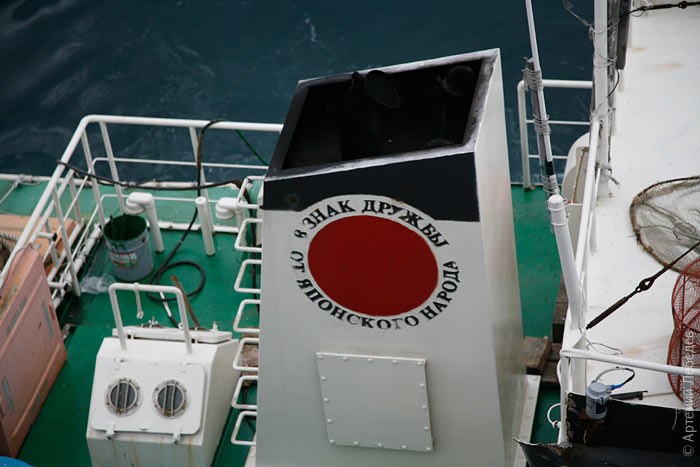 A token of friendship from the Japanese people Then a lighter comes out to exchange goods. You have to blow black smoke into the air to make white froth in the water. 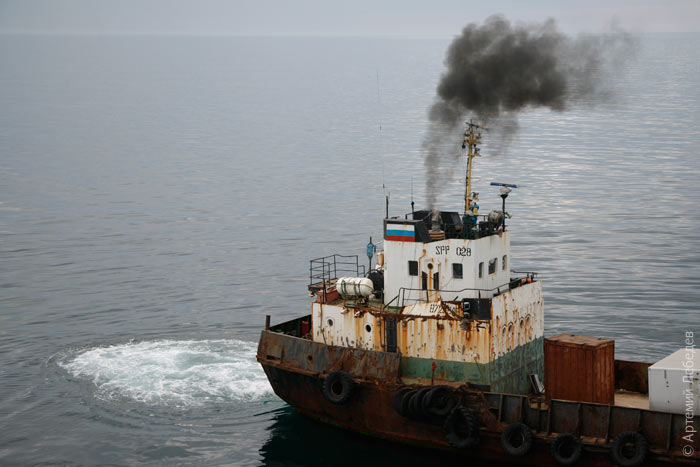 Approximately four hours later, our ship pulls into the bay at Shikotan Island. On our starboard side, there are cisterns with fuel supplies bearing an inscription that says “no smoking,” split up into four parts. 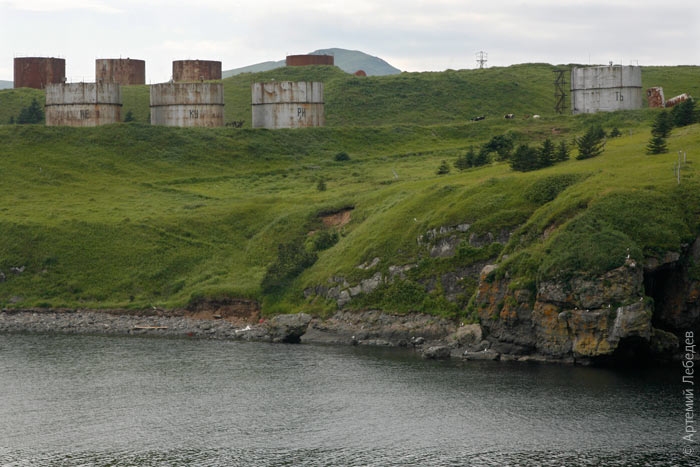 NO SM OK ING On the port side is a rusty metal graveyard. 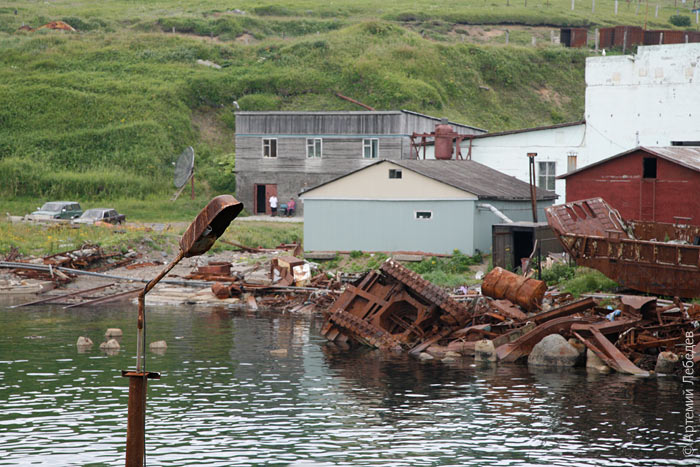 This is the place from which coast guard ships depart for combat alert duty. Our ship docks at the wharf, which is simultaneously part of the fish plant’s facilities and a border zone. This is the village of Malokurilskoye, one of the two settlements on Shikotan. 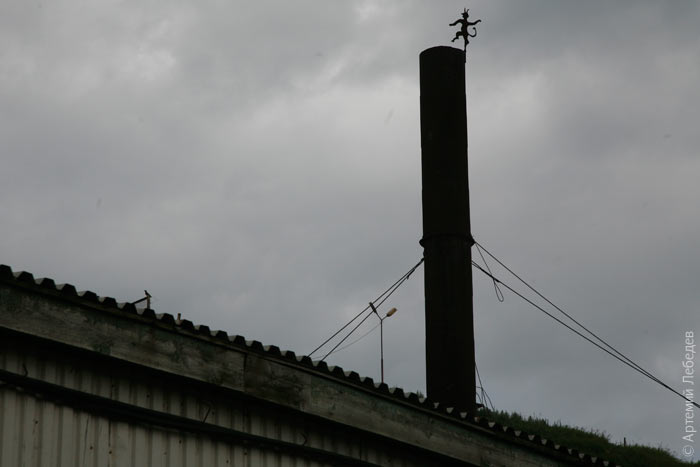 MalokurilskoyeIn 1994, an earthquake destroyed half the homes here. 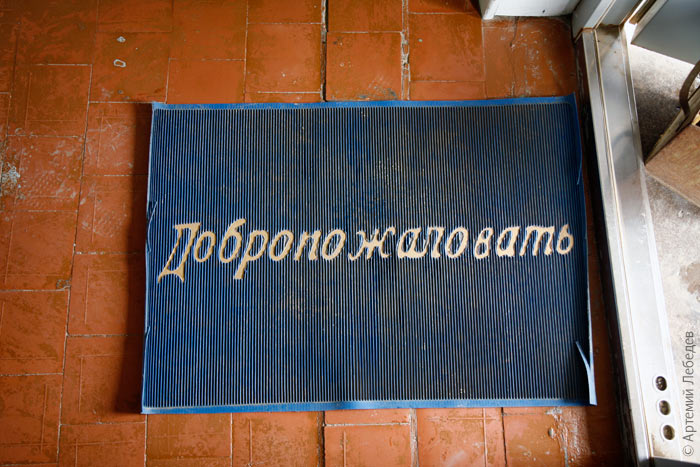 Welcomehome The school building was also reduced to ruins. On the bright side, the bathrooms now have excellent views. 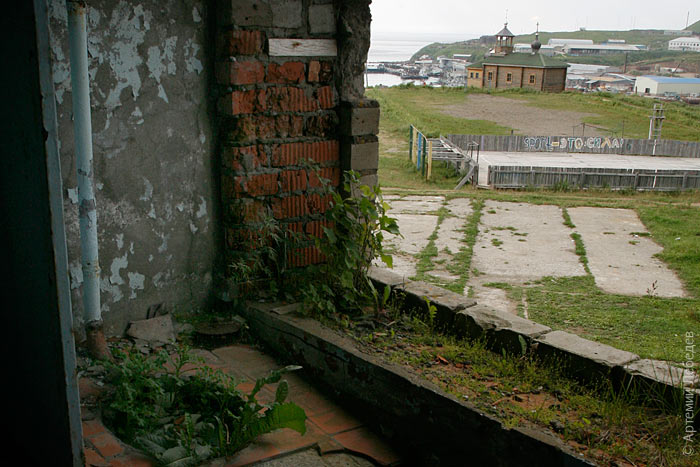 Most of the houses are two-story wooden ones. Practically all of the brick and reinforced concrete buildings were destroyed. 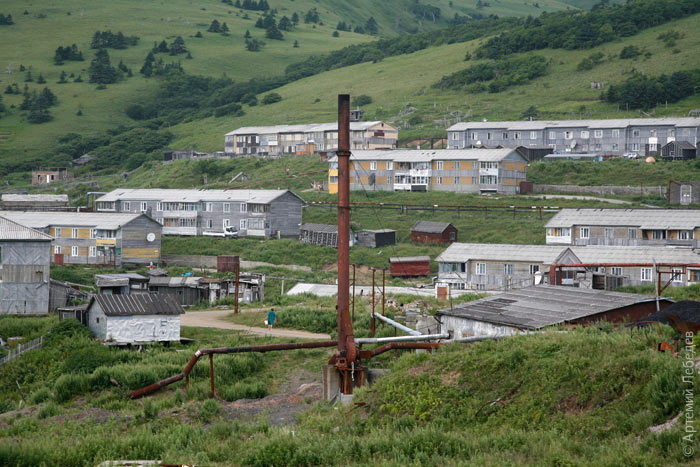 The main decorative element is tin can lids, which the local canning plant has in abundance. 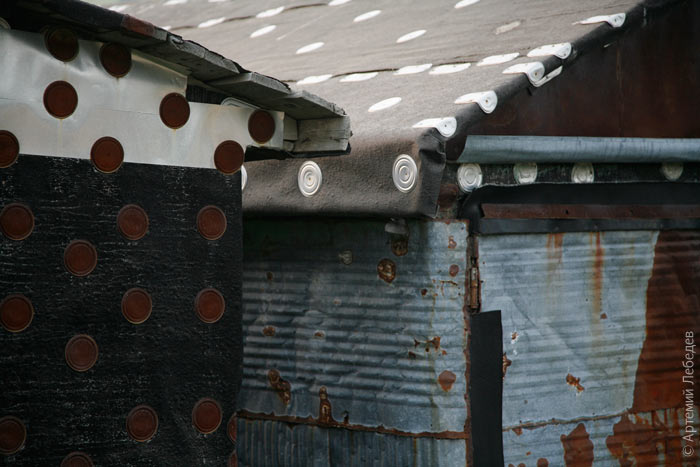 There isn’t much to see out the windows here, so many people just cover the entire window surface with sheets of plastic to keep out drafts and leaks. 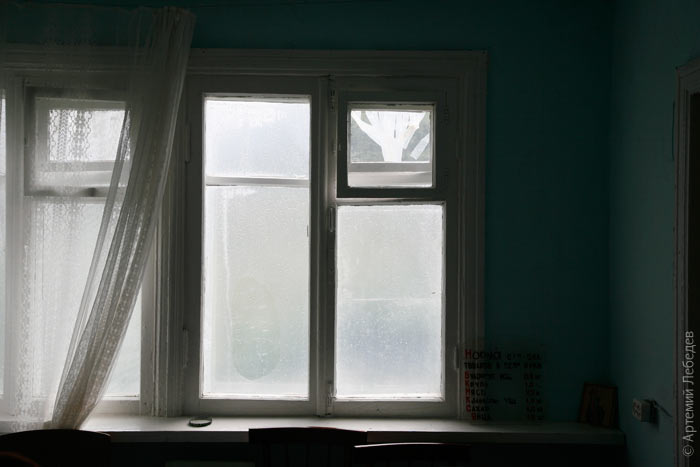 The Japanese left behind a couple of cemeteries on the island. 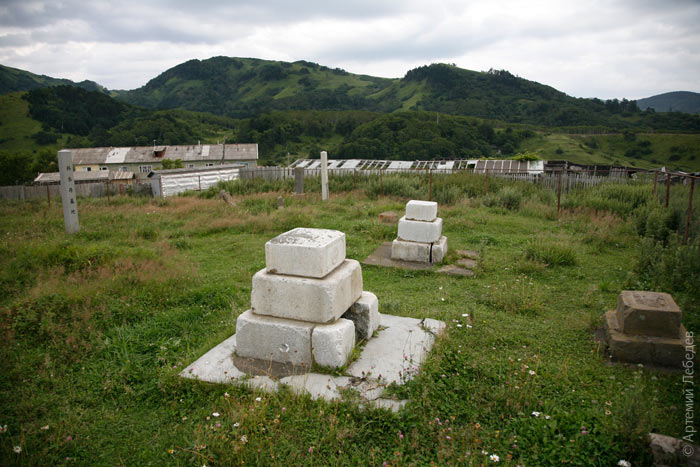 Everything else is ours. 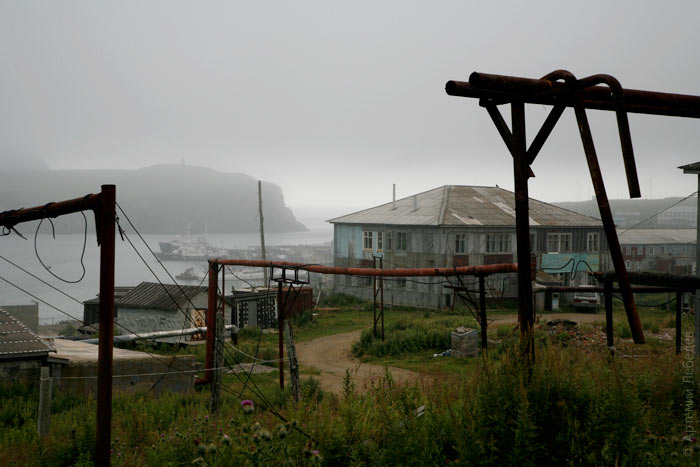 The fish come to shore on their own—it’s spawning season. Here’s a pink salmon hunter getting dressed after a successful round of hand fishing. 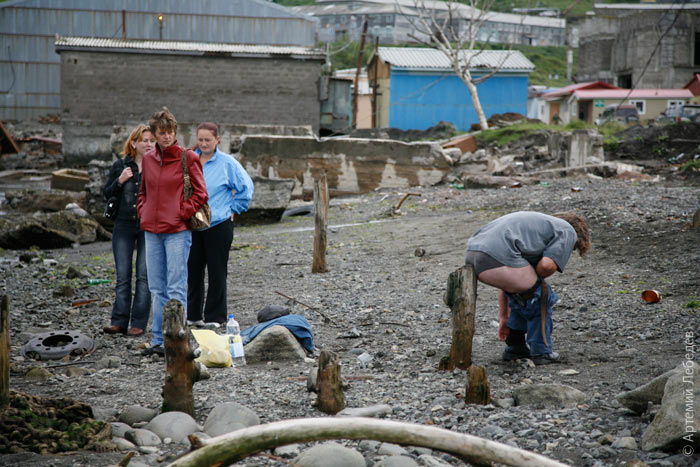 Some get their lunch from their vegetable patch. 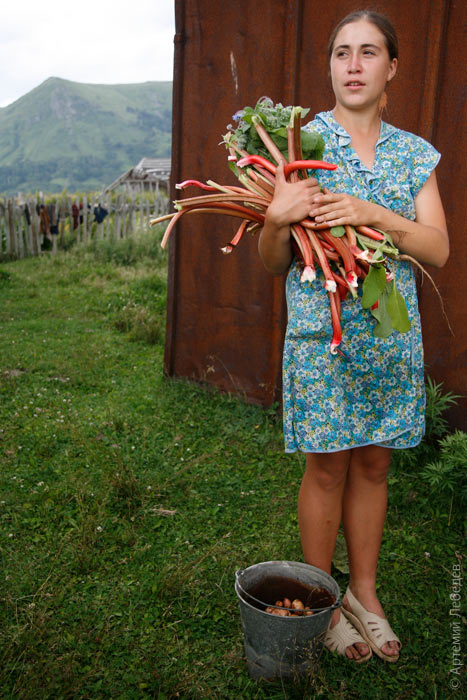 Some take a walk around the village and collect enough scrap metal for a little bit of contraband. 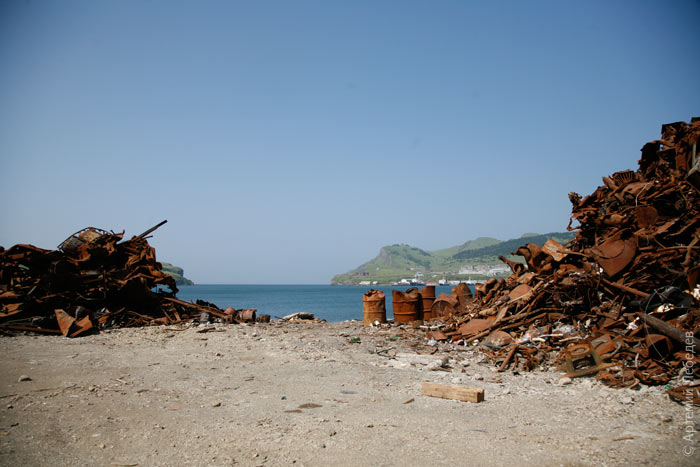 Cows graze on their own, munching on leftover potato peels at a burning dump. Fresh milk, anyone? 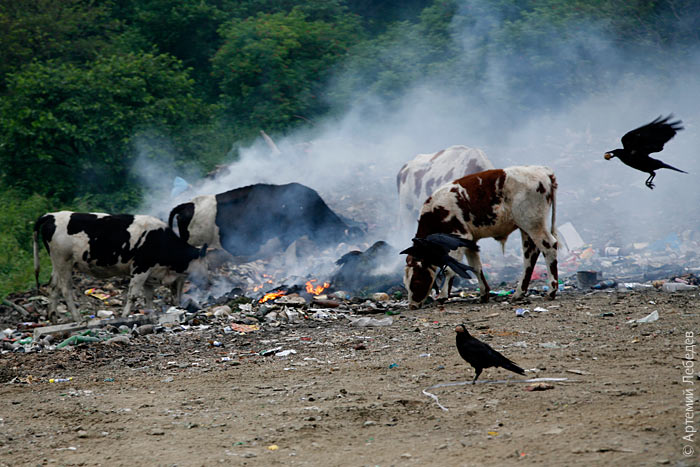 KrabozavodskoyeThe second village on Shikotan, whose name translates as “crab factory,” never actually had a crab factory as far as the locals can remember. But it does have a space-age megaschool. You can see it on the photo—it’s the really bright orange/white spot. 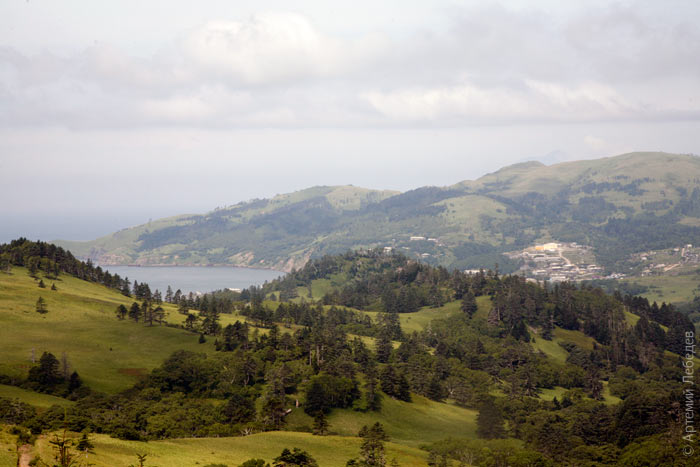 They say that after the earthquake, the Japanese decided to build a new state-of-the-art school in Malokurilskoye, to replace the one that had been destroyed. Not wanting to lose face, our people started building a new model school in Krabozavodskoye—which has only half the number of school-age children. The Japanese changed their mind at some point, while we completed the job. But since popping out that many new schoolchildren will take some time, the school presently sits half-empty. 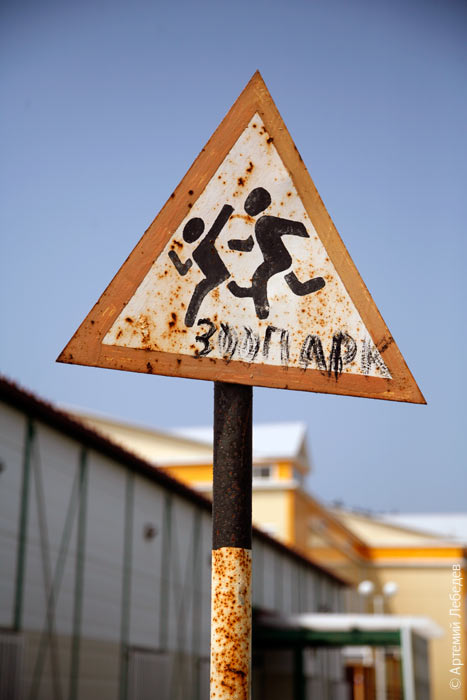 Zoo The inhabitants of the two villages were never too fond of one another to begin with, and this only added fuel to the fire. I found an enigmatic piece of children’s artwork inside one of the classrooms. It’s clear that everything used to be just peachy before, but the “after” part is a total mystery. Did the father horse butcher the mare and colt and roast them over the fire for dinner? Did someone get drunk and slaughter the horse family? Only one thing is certain: the flock of birds vaguely clustered together at first, but then got into formation and flew away. 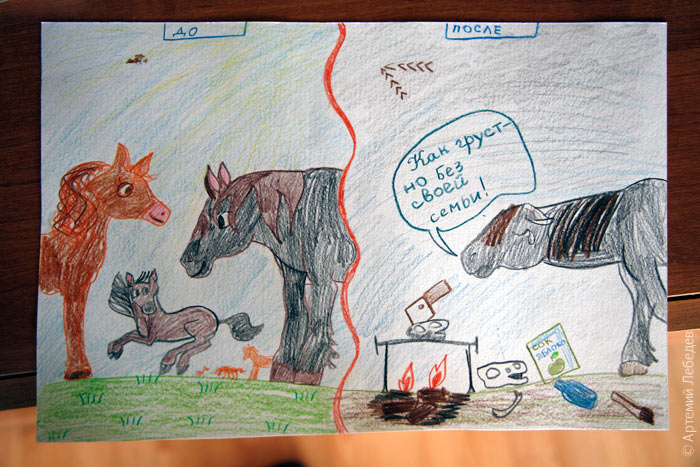 Before/after. It’s so sad without my family! Apple juice Krabozavodskoye has a highly developed culture of waste disposal. They’ve come up with their own design for trash cans made out of stainless steel tubs from top-load washing machines. 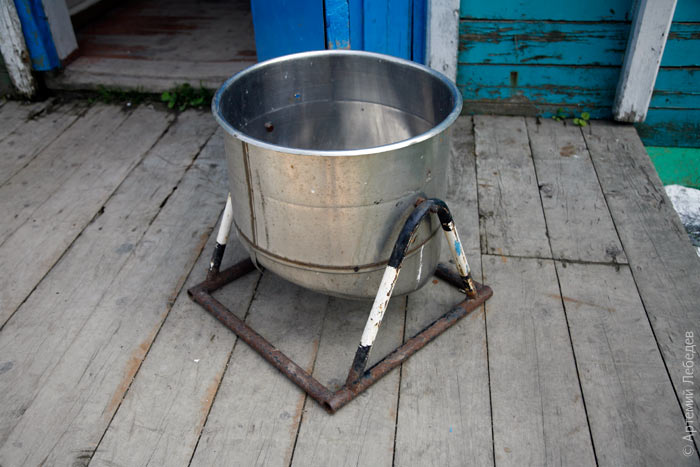 And special waste containers. Just open the hatch, throw in your bag, and presto—no dogs or cows feeding on trash right and left, like in Malokurilskoye. 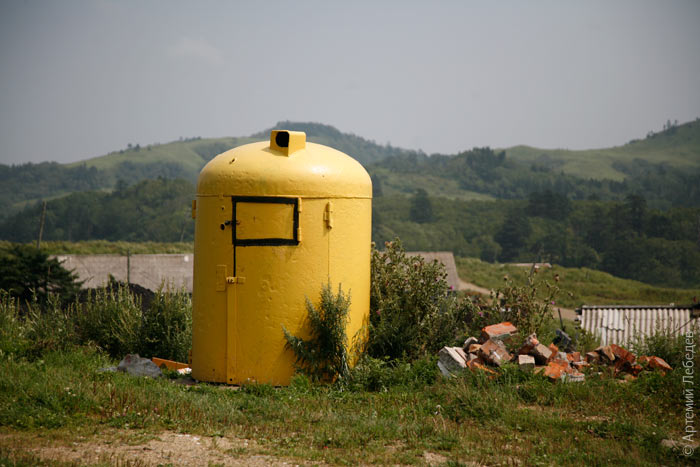 Even the bus stops are unique.  And all because they care about the people here. 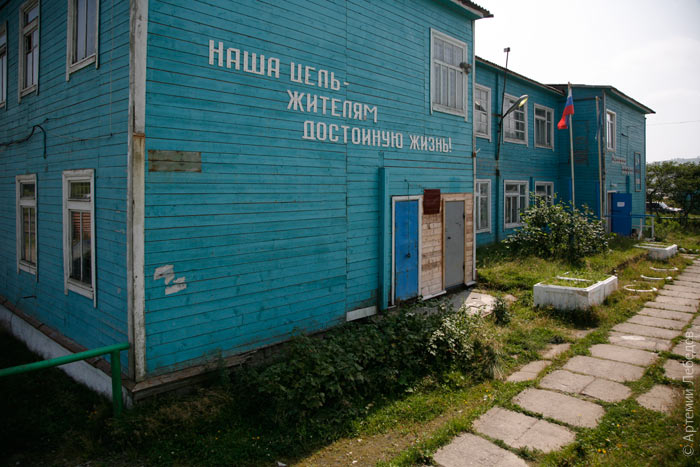 Our goal is decent living standards for our residents! By the way, there are cars on Shikotan, but no gas stations. The astute reader will surely be able to figure out where drivers fuel up their cars. The IslandShikotan’s land area is almost the same as Easter Island’s. So is the scenery. Except maybe for the radiators which some of the roads are paved with for sturdiness. 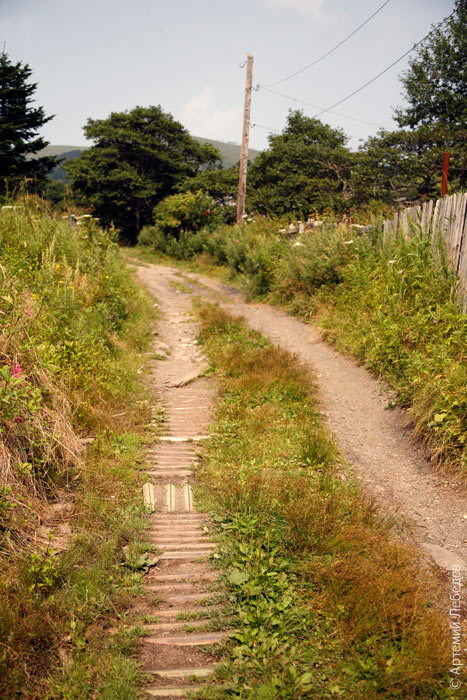 There used to be a Soviet pillbox set up in almost every bay. Now nearly all of them have been washed down to the shore. 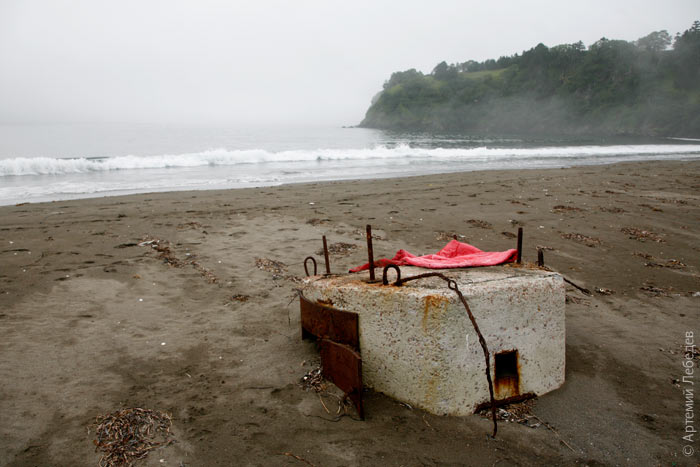 In addition to the cemeteries, the Japanese also left a lighthouse, which continues to operate to this day. 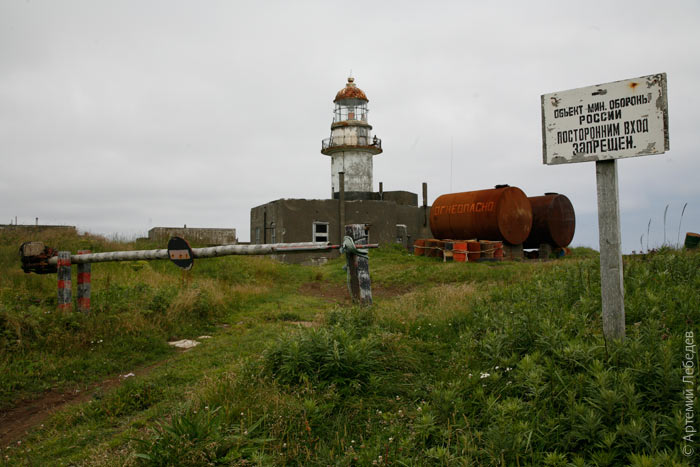 Property of the Ministry of Defense of Russia. Unauthorized entry prohibited From the lighthouse, you can see residential buildings (also Japanese) linked together by enclosed walkways—less running around outdoors in the wintertime. Jutting out into the sea on the right is Cape Krai Sveta (literally “Edge of the World”), the easternmost point of the South Kuril Islands. 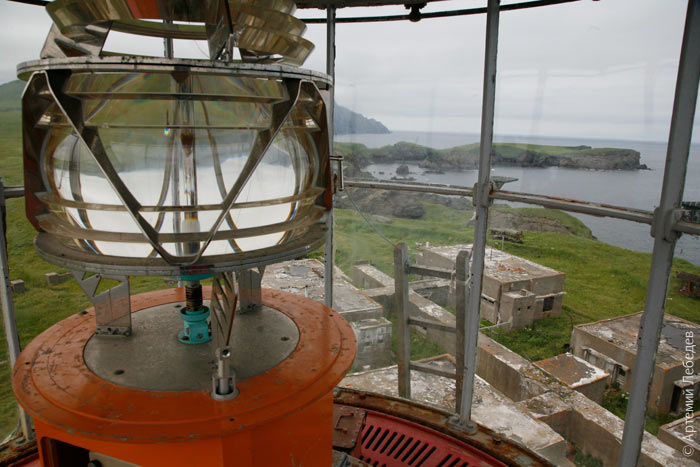 The lighthouse gets its electricity from a diesel power station, which the keeper starts up every evening. There’s no electricity during the day. The workshop still has delightful old safety posters on its walls (I’m going to make T-shirts like this soon). 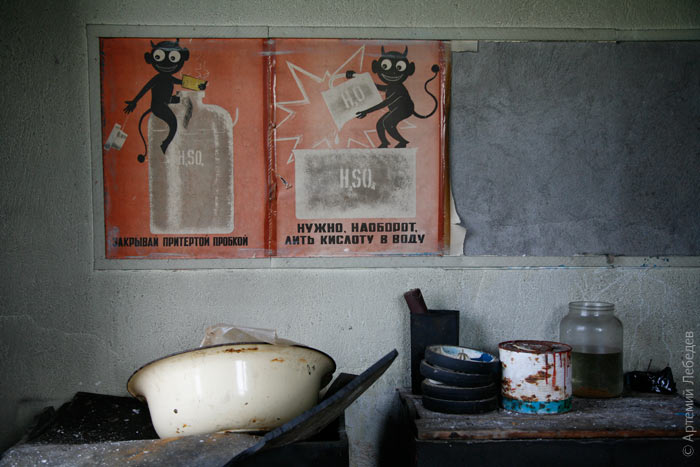 Plug with ground-in stopper. You need to do the opposite—pour the acid into the water The island also has volcanoes covered with bamboo forest. 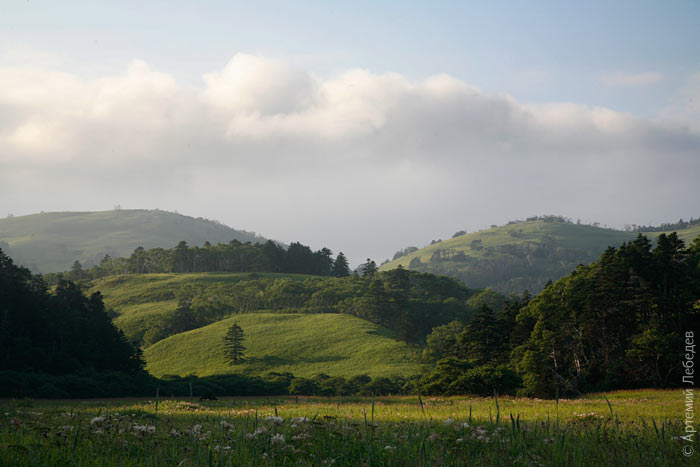 And craggy trees with cliff views. 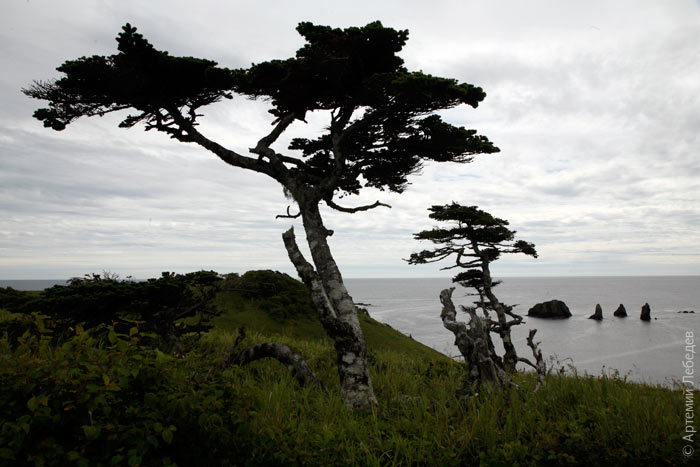 Not too far off, a poacher casts his nets for a few minutes. All the locals know that the fisheries inspector isn’t due to come till Saturday, and today is Thursday. 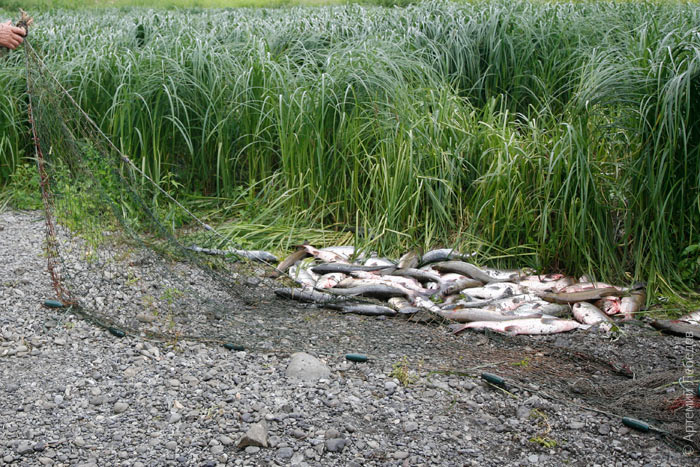 The pink salmon is begging to be gutted posthaste. 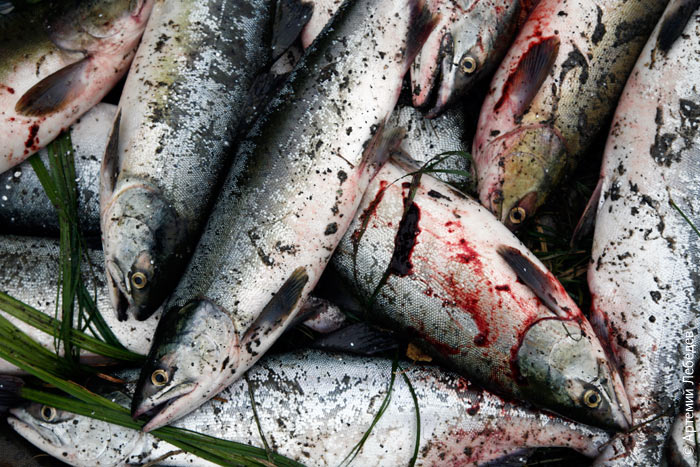 We should heed its plea: quickly cut open the belly and remove the roe. 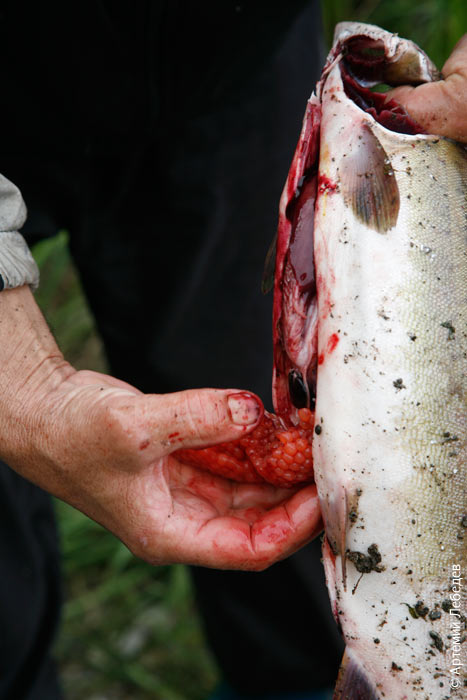 The gutted carcass goes into the bushes. 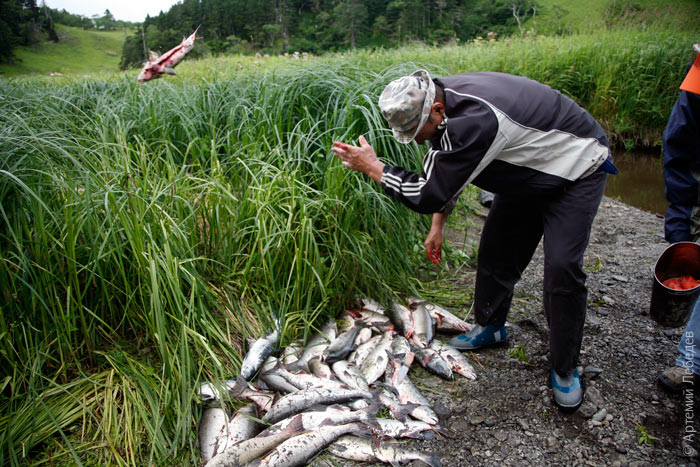 In a week, the dumping site will look something like this: 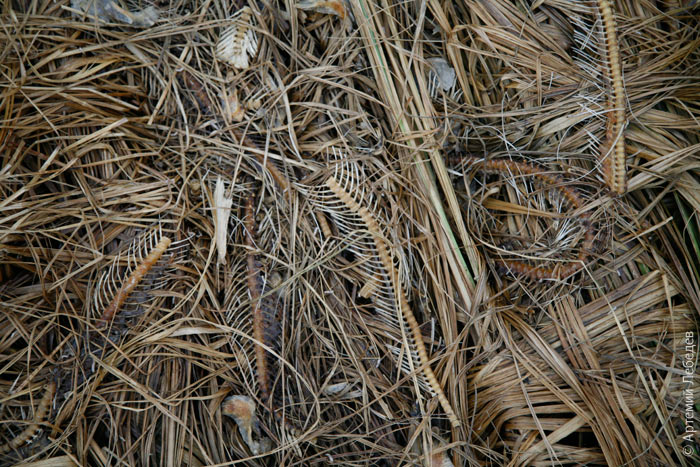 And the roe must be immediately consumed for lunch. 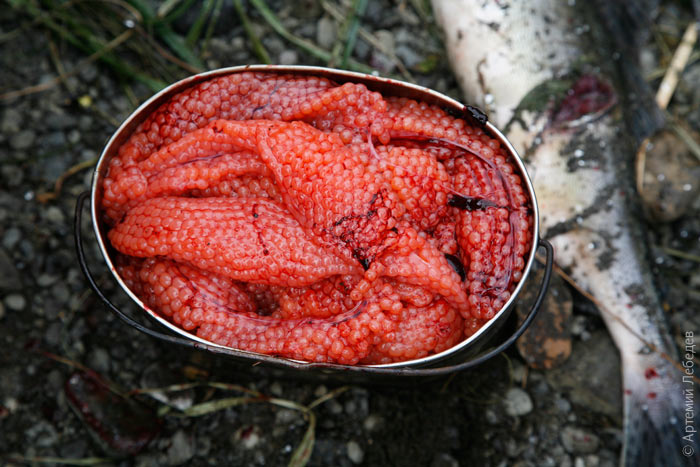 But first we have to rinse it and remove the membranes. Now we have almost the same thing as the red caviar sold in jars, only unsalted. 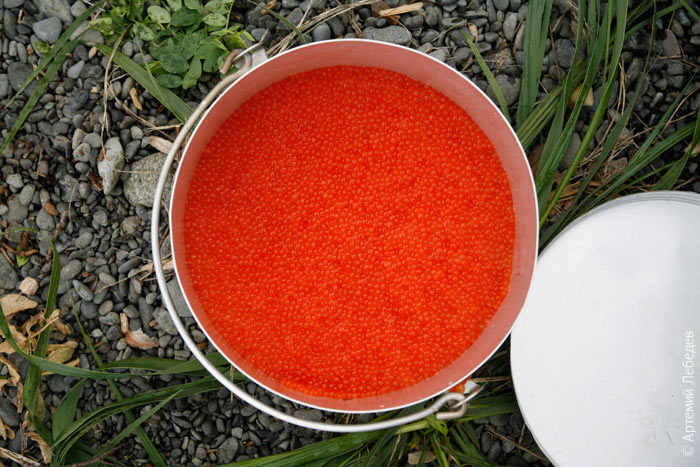 The proper level of saltiness is determined using a raw potato. When the potato rises to the middle of the water line, it’s time to stop salting. 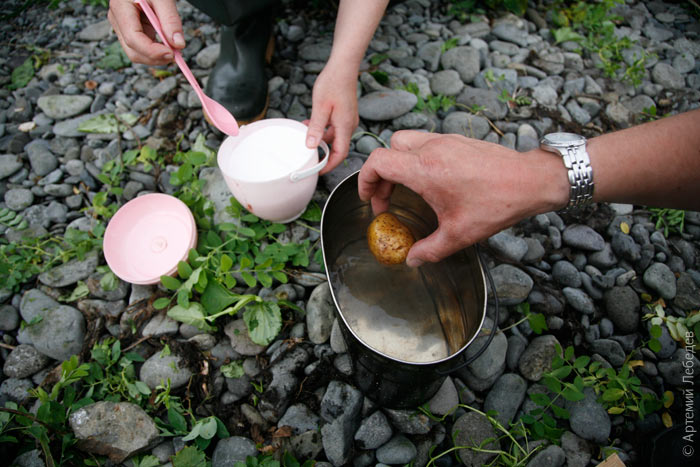 The salt water is then poured into the roe. After a few minutes, everything is transferred to a cheesecloth and hung up to let the water drain. 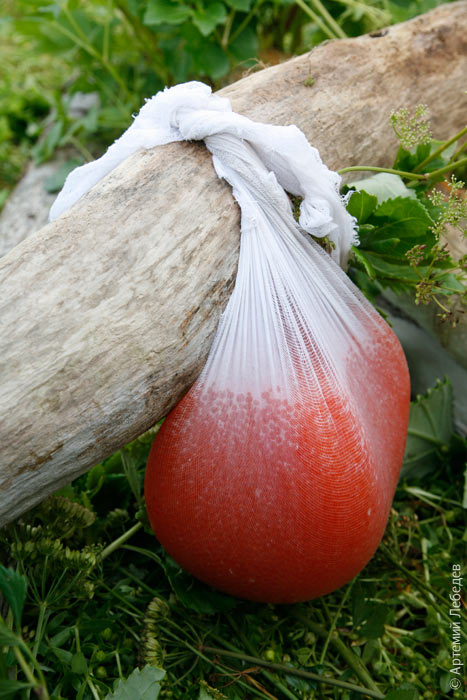 By the time you’ve finished slicing and buttering your bread, the caviar is good to go. 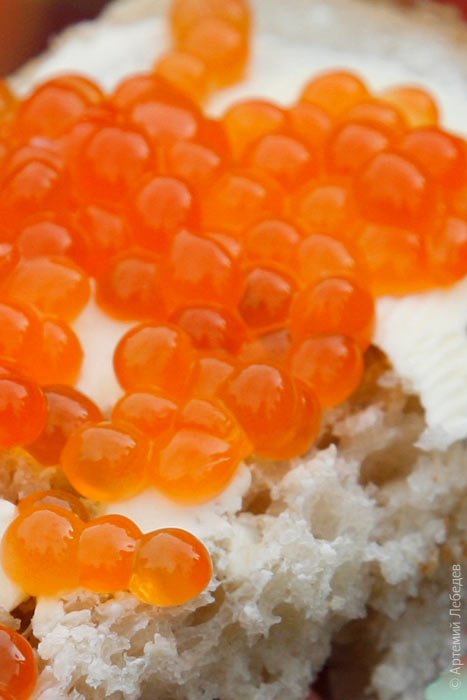 In short, the Japanese aren’t getting jack, and certainly not the Kurils. 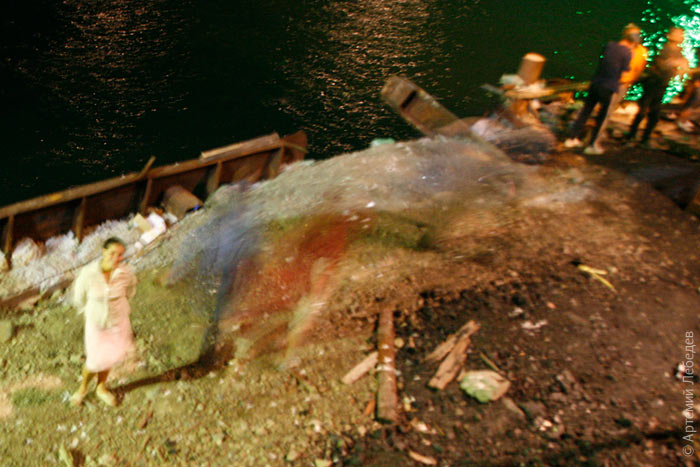 |